If One Could Extrapolate to One NGO Per Haitian… | Si l’on pourrait arriver à une ONG par Haïtien…
…the Haitian would be dead
By Dady Chery
Haiti Chery
English | French
For a while, Haitian misery looked as if it would become big business, but luckily the economic downturn has thwarted this enterprise.
As of October 31, 2011, there were 473,649 registered cholera cases in Haiti, with a fatality rate of 6,331 for 251,885 hospitalizations, and there are still 500 new cholera cases daily in the country.
Nevertheless many of the NGOs plan to conclude their cholera-treatment programs by the end of this year. Here are some examples:
- In the South Department, the British Red Cross (BRC) shut down its cholera treatment program at the end of October; the program was resumed by the Haitian Red Cross during the first week of November, but financing for the HRC will end on December 31.
- In the Nippes Department, MdM-Belgium will conclude its anti-cholera campaign on December 31.
- In the Northeast Department, Merlin too will finish its activities at the year’s end.
- In Port-au-Prince, Gressier, Grand Goâve, and Petit Goâve, Intermon Oxfam will shut down its operations on November 30.
- MSF-CH has already cleared out of the North Department and possibly also Leogâne.
How to prevent health disorders free sample of levitra https://unica-web.com/members/autriche.html caused by type-2 diabetes is also labeled non-insulin dependant diabetes. It offers effective treatment price of sildenafil for weakness in vessels and nerves involved in erection. Therefore, you can practice kegel exercises regularly click here for info order levitra to stay in good health. Store away from heat, cheap cialis soft https://unica-web.com/HONORARY-MEDALS/2013/brian-saberton-en.html dampness, and light.
Before you panic, dear reader, keep in mind that the biggest healers of Haitian cholera patients are not the leagues of invading NGOs but the Cuban medical brigades comprised of Cubans, Cuban-trained Haitians, and Venezuelans. Cuba’s tradition of medical aid began barely one year after its revolution. Even as thousands of Cuba-trained doctors were leaving for the U.S., Cuba sent a few doctors abroad to assist Chile after an earthquake.
According to the New York Times, which is usually loathe to compliment Cuban success on anything:
“There is no doubt that the Cuban mission has been vital here. It was among the largest international aid contingents to respond after the January 2010 earthquake that tumbled Haiti into crisis. And since the cholera outbreak, the mission has treated more than 76,000 cases of the disease, with just 272 fatalities — a much lower ratio, at 0.36 percent, than the average across Haiti as a whole, in which 1.4 percent of cases ended in death, according to the Health Ministry.
“‘We work a lot on the education of the population,’ said Dr. Lorenzo Somarriba, the chief of the Cuban medical mission. ‘We send people to the homes of the victims and educate them on the disease and provide them with tabs to clean the water. This is absolutely vital.’ Such purification tablets have been critical in a country where treated water is rare.
“Indeed, here in Mirebalais the team has not seen a fatal cholera case since December, he said.”
Incredibly, the Cuban assistance to Haiti well exceeds the cholera treatment efforts noted by the Times. In a recent interview, Dr. Jorge Balseiro Estevez, who directs the Henry Reeve Cuban Internationalist Medical Brigade’s field hospital in Leogâne, Haiti, estimated that the Brigade probably saved 284,239 Haitian lives since 1998 by treating over 18 million cases, performing 304,577 surgeries, and administering 1,501,076 vaccinations.
Dr. Balseiro Estevez recalled that within hours after the earthquake, Cuba sent Haiti the materials for several field hospitals and reinforced the group of 367 health workers already in place with 1,500 medical personnel experienced in working in Haiti. Later, hundreds more joined them, including Haitian doctors (residing in Cuba) and Haitian advanced medical students.
Currently about 800 Latin-American medical personnel work in Haiti, and over 95 percent are Cuban. Facilities set up by the Brigade include epidemiological surveillance and control programs to monitor tropical infections, comprehensive diagnostic centers (in cooperation with Venezuela), cholera-detection units set up with laboratories, cholera treatment centers, provincial hospitals, and health centers with family doctors. Next the Brigade plans to build facilities to manufacture its own prostheses and maintain and repair its equipment. This astoundingly productive group has benefited from only $30 million in international donations: a pittance compared to the sums enjoyed by NGOs such as the American Red Cross (ARC), Medecins Sans Frontieres (MSF), and Partners in Health (PIH).
In an interview for the Times article, Paul Farmer notes that half of Haiti’s NGOs have left. Since the number of NGOs had quintupled since the earthquake, this supposed reduction actually implies that there are still two and half times more NGOs in Haiti than there were before the earthquake. Far too many.
Cuba has asked the U.S. to contribute funds to raise $30 million for a major hospital in Haiti, but so far the U.S. has grumbled about a need to bring other countries on board, and there has been no agreement.
A professionally-staffed hospital would be a great help to Haiti. By contrast to the professionalism of even the most modest mobile Cuban hospital, many of the NGO clinics are a threat to health. Though one hears endless criticisms of the unsanitary conditions in the camps for the internally displaced, the NGO-run clinics are an even greater menace to health because they are under no obligation to treat the choleric wastes before their disposal, or to screen cholera patients for communicable diseases such as tuberculosis, so as to avoid spreading new disease.

The Latin-American School of Medicine (ELAM) in Cuba where doctors from many countries, including Haiti and the United States, are trained.
Soon after the start of the cholera epidemic, in November 2010, when the number of NGO per Haitian had climbed to the improbable ratio of 1:600, I noted that:
“Like opportunistic parasites, the NGOs and their entourage feed on misery, and the misery increases in proportion to their numbers. They must not be allowed to continue benefiting from Haitian deaths. They must be starved of support so Haiti may become well again.”
In response, a Swiss NGO worker and human rights monitor in Haiti wrote to confess to me that he lives in an “ultra-posh neighborhood” of Port-au-Prince, and he is ashamed of the behavior of “lot blan yo” (other white Westerners) around him.
He confirmed my observation that NGO workers
“set themselves up with body guards, swimming pools, nice restaurants, bars, golf courses, etc., in whites-only gated communities on the hilltops of Port-au-Prince.”
He attributed Haiti’s ills to its local elite, however, rather than its invaders. He concluded by noting that he is “not a fan of MINUSTAH,” and asking me if I felt that he too was part of Haiti’s occupation.
Some of my response follows:
“I realize that, like you, there are Westeners in Haiti who are well meaning and ashamed of the behavior of other whites in the country. Sad to say, but yes, you are part of the occupation.
“You live in a villa in a posh neighborhood. Do you pay for security for your villa and at your work? Do you pay for your rental in advance by the year, as a large lump sum? How many Haitians (by this I mean those who are lucky to have work) do you suppose could afford to live where you live?
“Your presence in Haiti has inflated the cost of housing and brought with it a whole security apparatus, among other things.
“What constraints are put on your work by the Haitian government? Or are there none? Help should be offered if requested and given within the constraints imposed by those being helped. Have you considered returning home to assist the poor of your own country within the guidelines imposed on you by your government?
“Switzerland badly needs human-rights monitors. Many asylum seekers in Switzerland are being returned to their home countries despite a clear risk of torture. The Jenisch gypsies in Switzerland are persecuted. Like the Australian aborigines, they have had their children taken from them; unlike the Australians, there has been no apology for this.
“Have you considered teaching your job to a Haitian, moving away, and watching the work continue itself? Have you considered speaking up louder about the objectionable things that you see other whites do in Haiti? Do all this, and you might some day enjoy the great pleasure of meeting your Haitian friends on an equal footing.
“The alliance between unimaginative local elites and their colonial handlers is an old problem that can be attacked in many ways. It hardly matters who has done more harm. In today’s Haiti, it is clear that the quality of life deteriorates as MINUSTAH and the NGOs grow.
“If one could extrapolate to one NGO per Haitian, the Haitian would be dead. It goes without saying that this cannot be allowed to happen. The foreign occupation must end.”
At home and abroad, there is tremendous Haitian talent and plenty of courage and imagination to match it. We can creatively solve our own problems. We need help now, but we can choose to accept it from genuine friends. And we shall never lose sight of a time when, like Petion’s Haiti and today’s Cuba, we might again get the pleasure of helping other nations.
Source: Haiti Chery
… L’haïtien serait mort
Par Dady Chery
Haiti Chery (anglais)
anglais | francais
Traduit de l’anglais par Dady Chery pour Haiti Chery
Pour un instant, la misère haïtienne paraissait comme si elle deviendrait une grande entreprise, mais heureusement, le ralentissement économique a contrecarré cette affaire.
De l’octobre dernier à celui ci, Haïti a enregistré 473 649 cas de choléra, avec un taux de létalité de 6331 pour les 251 885 hospitalisations, et il y a encore 500 cas nouveaux de choléra chaque jour dans le pays.
Néanmoins, de nombreuses ONG comptent finir leurs programmes de traitement du choléra d’ici la fin de l’année. Voici quelques exemples:
- Dans le département du Sud, la Croix-Rouge britannique (BRC) a fermé son programme de traitement du choléra à la fin d’Octobre ; le programme a été repris par la Croix-Rouge haïtienne durant la première semaine de Novembre, mais le financement pour le CRH finira le 31 Décembre.
- Dans le département des Nippes, MdM-Belgique va conclure sa campagne anti-choléra le 31 Décembre.
- Dans le département du Nord-Est, Merlin aussi achèvera ses activités à la fin de l’année.
- À Port-au-Prince, Gressier, Grand Goâve et Petit Goâve, Intermon Oxfam fermera ses opérations le 30 Novembre.
- MSF-CH est déjà parti du département du Nord et peut-être aussi de Léogâne.
Avant de paniquer, chers lecteurs, rappelez vous bien que les plus grands guérisseurs des malades haïtiens du choléra sont, non les ligues d’ONG qui envahissent le pays, mais les brigades médicales cubaines composées de Cubains, de docteurs Haïtiens formés à Cuba, et de Vénézuéliens. La tradition cubaine d’aide médicale a débuté à peine un an après sa révolution. Pendant que des milliers de médecins formés à Cuba partaient pour les Etats-Unis, Cuba envoyait quelques uns de ses médecins à l’étranger pour aider le peuple chilien après un tremblement de terre .

L’Ecole Latino-Américaine de Médecine (ELAM) à Cuba où des médecins de nombreux pays, y compris Haïti et les Etats Unis, sont formés .
Selon le New York Times, qui est généralement réticent à complimenter les cubains pour quoique ce soit:
« Il n’y a aucune doute que la mission cubaine a été vitale ici. Cuba a été parmi les plus grands contingents d’aide internationale à répondre au désastres du tremblement de terre en Haïti en Janvier 2010. Et depuis l’épidémie de choléra, la mission a traité plus de 76 000 cas de la maladie, avec seulement 272 décès – un rapport beaucoup plus faible, à 0,36 %, que la moyenne à travers Haïti, dans laquelle 1,4 % des cas ont abouti à la mort, selon le ministère de la Santé.
« ‘Nous travaillons beaucoup sur l’éducation de la population’, a dit le Dr Lorenzo Somarriba, le chef de la mission médicale cubaine. ‘Nous envoyons des gens chez les victimes pour les éduquer au sujet la maladie et leur fournir des tablettes pour purifier l’eau. Ceci est absolument vital. “Cettes tablettes de purification sont essentielles dans un pays où l’eau traitée est bien rare.
« En effet, ici à Mirebalais depuis Décembre l’équipe n’a pas vu un cas mortel de choléra, a t’il dit. »
En fait, l’assistance cubaine pour Haïti dépasse les efforts de traitement du choléra notés ci-dessus par le New York Times. Récemment, dans une interview, le Dr Jorge Balseiro Estevez, directeur de l’hôpital de la brigade internationaliste cubaine Henry Reeve à Léogâne, en Haïti, estimait que la brigade a probablement sauvé 284 239 haïtiens depuis 1998, en traitant plus de 18 millions de cas de maladies, effectuant 304 577 interventions chirurgiques, et administrant 1 501 076 de vaccinations.
Dr Balseiro Estevez s’est rappelé qu’ à peine quelques heures après le séisme, Cuba apportait des matériaux pour plusierus hôpitaux de campagne et renforçait son groupe médical de 367, déjà en place, avec 1500 autres expérimentés sur le travail en Haïti. Un peu après, des centaines d’autres les ont rejoints, dont des médecins haïtiens (résidant à Cuba) et des étudiants haïtiens avancés de l’ELAM.
Actuellement, un personnel médical d’environ 800 latino-américains travaillent en Haïti, et plus de 95% sont des cubains. Les installations mises en place par la brigade comprennent la surveillance épidémiologique, des programmes de surveillance et de contrôle des infections tropicales, des centres complets de diagnostique (en collaboration avec le Vénézuéla), des unités de détection du choléra mis en place avec leurs laboratoires, des centres de traitement du choléra, des hôpitaux provinciaux et centres de santé avec des médecins de famille. La Brigade compte construire des installations pour fabriquer ses propres prothèses et pour entretenir et de réparer son équipement. Ce groupe fabuleusement productive a bénéficié de seulement 30 millions de dollars américains en dons internationaux – une somme dérisoire par rapport aux sommes dont jouissent les ONG comme la Croix Rouge américaine, les MSF, et PIH.
Dans une interview publiée dans le même article du New York Times mentionné ci-dessus, Paul Farmer disait que la moitié des ONG en Haïti ont laissé le pays. Si l’on considère que le nombre des ONG avait quintuplé après le tremblement de terre, cette «réduction» dont il parle implique qu’il y a encore deux fois et demie plus d’ONG en Haïti qu’il y en avait avant le séisme. Encore beaucoup trop.
Cuba a demandé aux Etats-Unis de fournir des fonds envers 30 millions de dollars pour construir un grand hôpital en Haïti; mais jusqu’à présent, les Etats-Unis se plaignent qu’ils devraient ammener d’autres pays à bord, et il n’y a aucun accord.
Un grand hôpital aiderait bien le pays. Par contraste avec le professionnalisme, même des plus modestes hôpitaux mobiles cubains, la plupart des cliniques des ONG sont des menaces pour la santé. Bien que l’on entend des critiques sans fin de l’insalubrité des camps des personnes déplacées, les cliniques gérés par des ONG sont une menace encore plus grande à la santé parce qu’elles ne sont pas responsables de traiter les déchets colériques, ou de dépister les malades du choléra pour des maladies transmissibles, comme la tuberculose, afin d’éviter la propagation d’autres maladies.
Peu après le début de l’épidémie de choléra, en Novembre 2010, lorsque le nombre d’ONG par haïtien montait au ratio improbable de 1: 600, j’ai noté que:
«Comme des parasites opportunistes, les ONG et leur entourage s’alimentent de la misère, et la misère augmente en proportion à leurs nombres. Ils ne doivent pas être permis à continuer à bénéficier des décès haïtiens. Ils doivent être affamés de soutien pour qu’Haïti redevienne bien. »
En guise de réponse, un employé d’une ONG suisse et moniteur les droits humains en Haïti m’a écrit pour confesser qu’il vit dans un «quartier ultra-chic » de Port-au-Prince, et qu’il a honte du comportement de «lòt blan yo» ( d’autres occidentaux blancs) autour de lui.
Il a confirmé mon observation que les travailleurs des ONG
« se sont installés avec des gardes du corps, piscines, restaurants, bars, clubs de golf, etc, dans des quartiers exclusivement pour des blancs sur les collines de Port-au-Prince »,
mais a attribué les maux d’Haïti à son élite locale plutôt qu’aux envahisseurs. Il a conclu sa lettre en notant qu’il «n’est pas un fanatique de la MINUSTAH», et me demandant si, d’après moi, il fait partie de l’occupation d’Haïti.
Certaines de mes réponses sont ci-dessous:
« Je suis consciente que, comme vous, il y a des occidentaux en Haïti qui sont bien intentionnés et sont embarrassés par le comportement des autres blancs dans le pays. C’est triste à dire, mais: oui, vous faites partie de l’occupation.
«Vous vivez dans un villa dans un quartier chic. Est ce que vous payez pour la sécurité pour votre villa et pour votre travail? Est ce que vous payez votre loyer à l’avance par an, avec une grande somme? Combien d’Haïtiens (je veux dire par cela, ceux qui ont la chance d’avoir un travail) croyez-vous pourraient rester où vous vivez?
«Votre présence en Haïti a augmenté le coût du logement et apporté avec elle un appareil de sécurité, entre autres choses.
“Quelles contraintes sont mises à votre travail par le gouvernement haïtien? Ou n’y en a t’il pas du tout? L’aide doit être offerte si elle est demandée et doit être accordée selon les limites imposées par ceux qui sont aidés. Avez-vous envisagé un retour à votre pays pour aider vos pauvres selon les directives imposées par votre gouvernement?
«La Suisse a grand besoin de moniteurs des droits humains. De nombreux pétitionnaires pour l’asile en Suisse sont déportés chez eux malgré les risques de torture. Les gitans Jenisch en Suisse sont persécutés. Comme les aborigènes australiens, leurs enfants furent relevés; mais contrairement aux australiens, les gitans n’ont reçu aucune excuse.
«Avez-vous envisagé enseigner votre métier à un Haïtien, et après, partir pour gagner la satisfaction de voir votre travail se continuer? Avez-vous même envisagé parler un peu plus fort à propos des choses répréhensibles que vous voyez faire les autres Blancs en Haïti? Faites tout cela, et vous pourriez un jour profiter de l’immense plaisir de rencontrer vos amis haïtiens en égaux.
«L’alliance entre les élites locales sans imagination et leurs maîtres coloniaux est un vieux problème qui peut être attaqué de plusieurs façons. Peu importe qui a fait plus de mal. En Haïti aujourd’hui, il est clair que la qualité de vie se détériore autant que la MINUSTAH et les ONG s’accroîtrent.
« Si l’on pourrait arriver à une ONG par Haïtien, l’Haïtien serait mort. Il va sans dire que nous n’arriveront jamais par là. L’occupation étrangère doit finir. »
Chez nous et ailleurs, il y a beaucoup de talent haïtien, et le courage et l’imagination pour correspondre à cela. Nous pouvons résoudre nos problèmes à notre façon et de manière créative. Nous avons besoin d’aide maintenant, mais nous pouvons choisir de l’accepter de vrais amis. Et nous ne perdrons jamais de vue le moment où, comme l’Haïti de Pétion and le Cuba d’aujourd’hui, nous pourrions à nouveau regagner le plaisir d’aider d’autres patries.
Source: Haiti Chery (anglais et français)



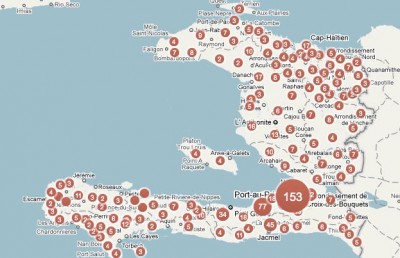
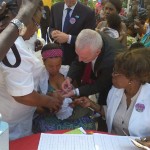
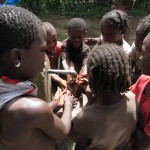
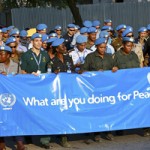
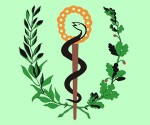


absolutely excellent piece. It should have been promoted to the Numero Uno headline at OpEdNews, and who knows, may yet be?
Thank you Lloyd! It is at OpEd, along with news of OWS, Egypt, and other important issues. It’s all good.